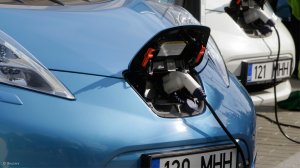JOHANNESBURG (miningweekly.com) – As the world speeds ahead with a move towards more electric vehicles (EVs), including hybrids, plug-ins and full electric cars, the nickel market is heading for deepening deficits, falling stocks and rising prices.
This is the view of Wood Mackenzie principal analyst Sean Mulshaw, who forecasts that the widely anticipated expansion of EV sales will exacerbate the predicted structural shortage in nickel between now and 2025.
Sales of passenger EVs are forecast to increase from 2.4-million in 2016 to about 14.2-million in 2025, which, in battery terms, is the equivalent of an increase from 26 GWh to 215 GWh over the same period.
Most of the batteries generating this power are expected to be based on nickel-containing chemistries.
Wood Mackenzie estimates that nickel demand in EV batteries will increase from about 40 000 t in 2016 to an estimated 220 000 t in 2025. When other battery applications are included, such as consumer electronics and energy storage, this figure increases to 275 000 t in 2025, or about 12% of global supply in 2025.
However, Mulshaw questions where the nickel will come from to feed the battery demand, pointing out that most of the incremental supply through to 2025 will be ferronickel or nickel pig iron, which are not suitable raw materials for battery nickel sulphate (NiSO4).
He says NiSO4 production is expected to be stepped up in coming years, with secondary recyclers likely to expand and existing producers of nickel briquettes seen redirecting nickel, as powder, to the NiSO4 makers. This could be further boosted by the substantial inventory of briquettes held in LME warehouses. Beyond that, new projects may focus on producing nickel intermediates, such as nickel hydroxides, for direct use as feed for NiSO4 rather than for processing through to finished metal.
However, this does not solve the problem of deficits in the wider market, Mulshaw cautions.
“If nickel is side-tracked to the battery supply chain, away from pre-existing consumers, once stocks have been depleted the issue for the nickel market is one of finding alternative nickel units for those consumers. EV consumers may get their nickel but everyone else could be left short.”
The price of nickel has climbed in recent months, from $8 680/t in mid-June to $12 000/t this week.
Edited by: Creamer Media Reporter
EMAIL THIS ARTICLE SAVE THIS ARTICLE
ARTICLE ENQUIRY
To subscribe email subscriptions@creamermedia.co.za or click here
To advertise email advertising@creamermedia.co.za or click here













